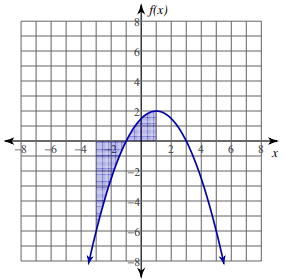MEAN VALUE THEOREM FOR INTEGRALS EXAMPLES
If f is continuous on [a, b], then at some point c in [a, b],

The graphical rectangular interpretation of the Mean value theorem for Definite Integrals is that:
If f is continuous on [a, b], then at some point c in [a, b] there is a rectangle with height f(c), and length b – a, such as the area of the rectangle equals the area under the curve f(x) on the interval [a, b]
For each problem, find the values of c that satisfy the Mean Value Theorem for Integrals.
Problem 1 :

Solution :
Equating the value derived from mean value theorem for integrals to f(x), we get
Problem 2 :
f(x) = 4/x2 ; [-4, -2]
Solution :
Here a = -4, b = -2
Equating the value derived from mean value theorem for integrals to f(x), we get
For each problem, find the average value of the function over the given interval. Then, find the values of c that satisfy the Mean Value Theorem for Integrals.
Problem 3 :
f(x) = −x + 2; [−2, 2]
Solution :
Finding average value of the function :
Finding the value of c that lies in the given interval :
So, the value of c is 0, which lies in the interval.
Problem 4 :
Solution :
Finding average value of the function :
Finding the value of c, using mean value theorem :
So, the value of c is 3.8, which lies in the interval.
Problem 5 :
Solution :
Finding average value of the function :
Finding the value of c, using mean value theorem :
Problem 6 :
Solution :
Finding average value of the function :
Finding the value of c, using mean value theorem :
Recent Articles
-
Finding Range of Values Inequality Problems
May 21, 24 08:51 PM
Finding Range of Values Inequality Problems -
Solving Two Step Inequality Word Problems
May 21, 24 08:51 AM
Solving Two Step Inequality Word Problems -
Exponential Function Context and Data Modeling
May 20, 24 10:45 PM
Exponential Function Context and Data Modeling